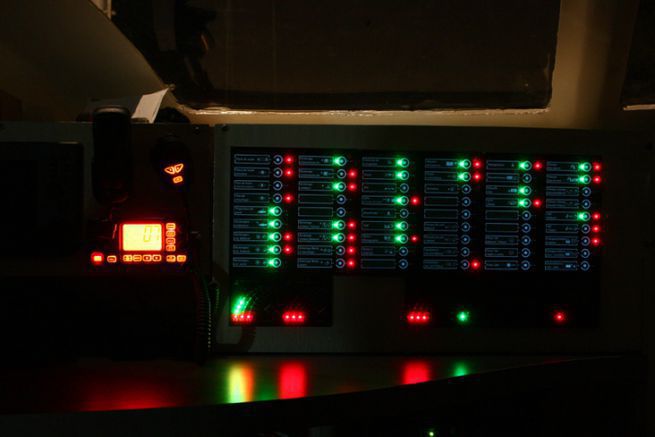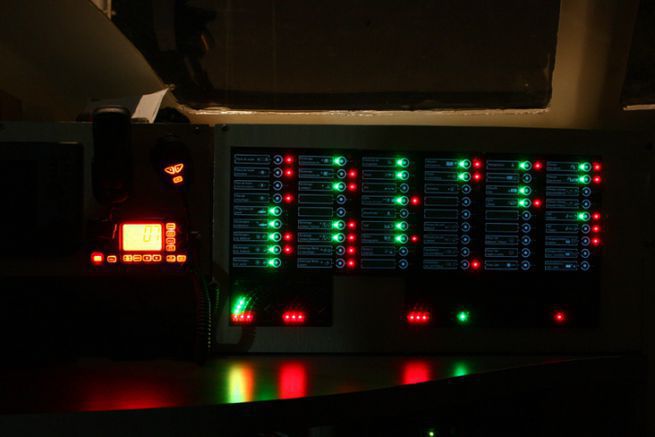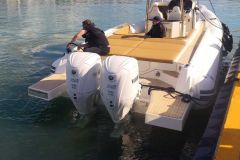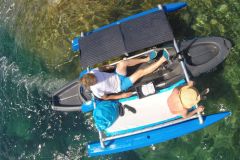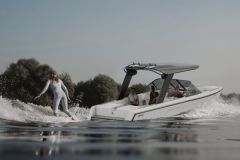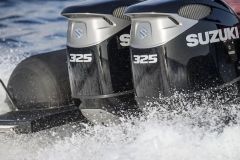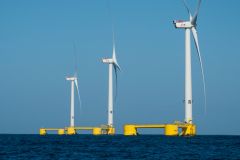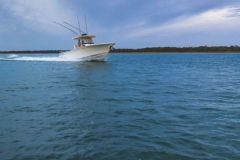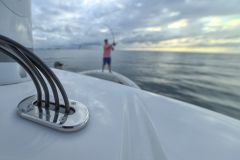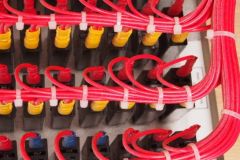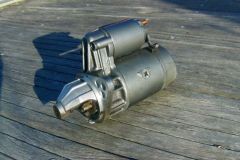Once the electrical balance of the boat ( see our topic to determine its electrical balance ), it should be used to size the on-board battery charging system. This recharging can be done in different ways: shore charger, alternator, solar panels, wind turbine, hydrogen generator, propeller shaft alternator. What is the most suitable solution? Description of all these means of loading and especially calculation of the cost of using these electricity producers.
Using our example of a 400 Ah lead service battery pack, what solutions are available to us?
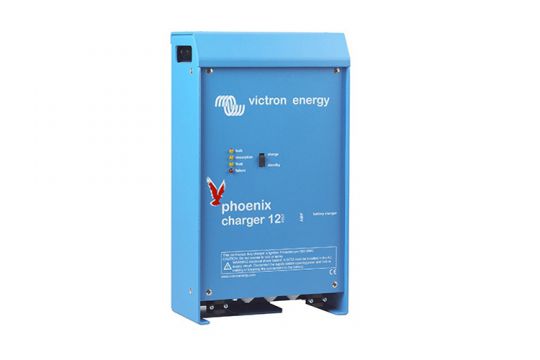
The dock loader, a must!
With a charger connected to the 220 V shore power, the logic consists in sizing the charger so that the batteries can be recharged overnight, while spreading out the instantaneous consumption on board.
Battery manufacturers recommend a charging power of between 20% and 25% of the battery capacity. In our example, an 80 A charger would do the job perfectly (20% of 400 Ah).
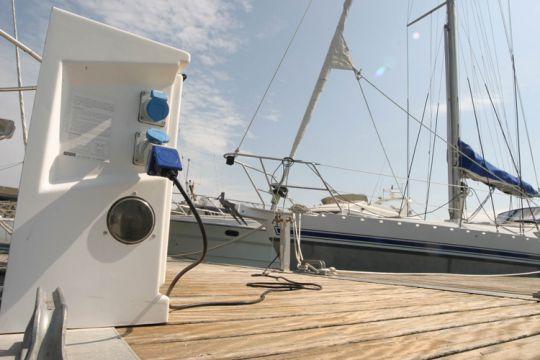
Recharging via a 220 V charger is highly dependent on the current available on the dock. Indeed, if you have a 12v 100 A charger, it will require at least 15 to 17 A in 220 V from the shore power station, without taking into account the instantaneous consumers! Attention, some ports limit the current available at the terminals on the pontoons to 6 or 8 A!
A charger of this type will recharge the batteries in 8 hours.
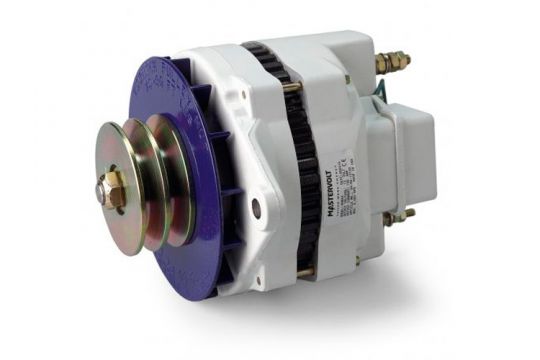
The alternator and the regulator, a smart investment
On our boats, the alternator is coupled to the main engine. When the engine is started from the on-board engine, the alternator starts to charge the battery. The alternators delivered as standard with the inboard engine are often not sufficient to cover the recharging of a battery bank. They're just calculated to recharge a diesel starter battery. It is therefore often necessary to change to a more powerful model.
By having a 100 or 120 A alternator equipped with an alternator charger or alternator regulator (capable of delivering a 3-phase charge), fully discharged batteries can be fully recharged with 8 hours of engine time. Indeed, at the end of the cycle, 4 hours of charging, in "Absorption" mode, are necessary to increase the battery charge from 80 to 100%.
A powerful marine alternator and regulator set costs 1,500 euros installed with a fuel cost (engine operation) of 0.06 euros/hour produced.
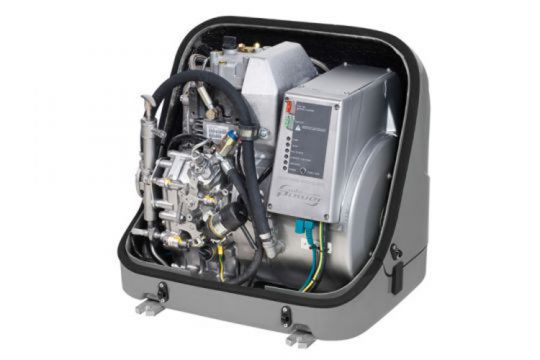
Gasoline or diesel generators (generator set), efficient and inexpensive auxiliaries
Depending on their size, these generators produce between 2,000 and 4,000 W. A 4,000 W unit will deliver approximately 16 A at 220 V.
It is important to have a powerful loader (the dock loader to which the unit will be connected) that can significantly absorb the output of the unit.
These generators are available in diesel, in relatively quiet versions, packed in a cocoon with soundproofing properties. As the batteries are charged via the unit and through the charger, with a 100 A charger, it will take 8 hours to charge them.
A 4000 W soundproofed and low consumption unit represents an initial investment of 5000 euros for a consumable cost of 0.03 euros/Ah products.
We are not referring to "small groups" whose limited power prevents them from charging a battery bank such as the one in our study.
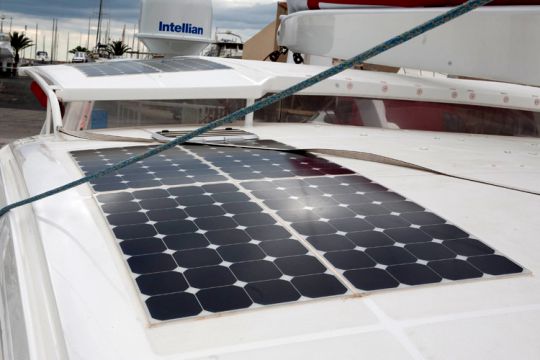
Photovoltaic sensors, highly variable generators
It is reasonable to think of installing two photovoltaic panels on a sailboat for a peak power of 300 to 400 W. This figure means that these sensors can produce at peak (at maximum optimal conditions!) 400W, transformed by an MPPT controller into 30A.
Without another power producer, given the instantaneous consumers and under optimal sunlight conditions, it will be impossible to fully recharge a battery with just these solar panels. The disadvantage of these sensors is their high dependence on light and the absence of shade. Thus we can estimate at 150A the production of a beautiful sunny day and 20A the average daily production of an installation of this type (summer/winter).
The price of such an installation would amount to EUR 1 000, with no fuel costs to be financed.
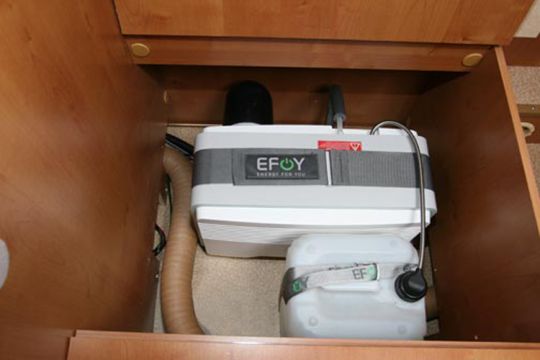
The fuel cell, a highly efficient but expensive auxiliary
It is a silent and non-polluting generator that provides autonomous electricity production in all weather conditions. The fuel cell exploits the electrochemical transformation in a cell of water and methanol at the anode and oxygen at the cathode, with CO2 as the only off-gas product.
In the case we are studying, a fairly powerful battery from the market, delivering 9A, will allow us to approach electrical autonomy in silence!
The price of an installation is 6000 euros with a fuel cost of 0.5 euros/Ah produced.
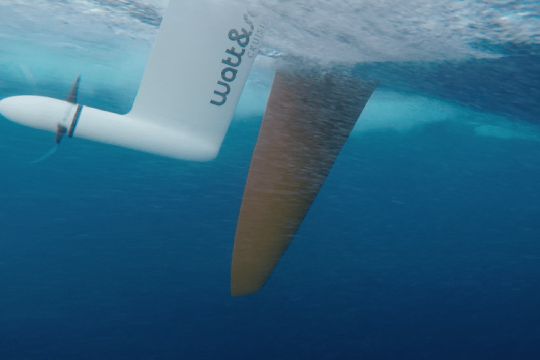
Hydrogenerators, auxiliary generators very well adapted to long cruises and crossings
This equipment, installed on the transom or under the hull, comprises an alternator set in motion by a shaft connected to a submerged propeller at the stern of the boat. They produce around 10 A depending on the speed of the sailboat. Depending on the navigation profile or the weather, these systems can charge from 0 to 120 Ah/day.
In coastal navigation, they are good charging aids, but unsuitable for fully recharging the batteries of the system we are studying, because the navigations are too short. During the crossing, when the sailboat is sailing several days in a row, the hydrogenerator works 24 hours a day. In these conditions, these devices allow the batteries to be recharged while spreading out the on-board consumption.
The price of a good transom hydro generator is about 6,500 euros including installation, without additional fuel costs.
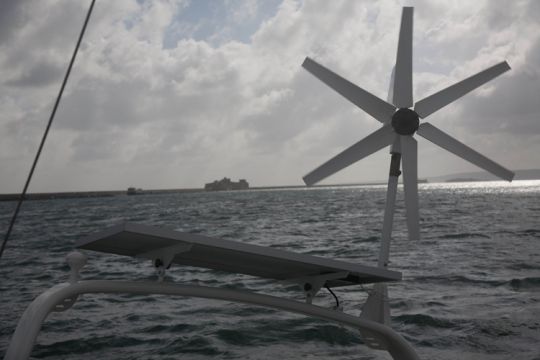
Wind turbines, efficient and cheap auxiliary generators, but all too often noisy
Depending on the wind at the time, the output of a wind turbine varies between 0 and 240 Ah/Day.
It is possible to install two wind turbines to maximize the load in windy periods and thus sometimes achieve energy autonomy. The quality of the assembly and the balancing of the wind turbine require a lot of care. These propellers that turn in the wind tend to create whistling and vibrations that are transmitted throughout the boat.
The installation of a good quality wind turbine, including installation, costs around 2,500 euros without any additional fuel costs.
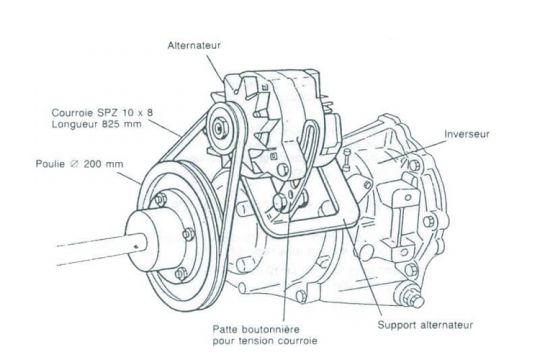
Shaft alternators, a simple device that has proven itself!
Also known as wake alternators, shaft alternators operate by exploiting the moment of rotation of the propeller shaft, left idle with the engine off. The speed of the boat under sail drives the submerged propeller which drives the shaft alternator, producing current.
These aircraft are capable of producing most of their output at low speed from 3 knots for a maximum power reached as early as 5 knots, a speed at which they generally deliver between 20 and 25 A.
In the same way as hydrogen generators, these devices can allow, during long days of navigation, to completely recharge our batteries by spreading out the onboard consumption over a dozen hours. They do not, however, produce any energy once the ship has come to a standstill.
This type of load tends to disappear on modern sailboats. Indeed, propulsion is increasingly done with a sail drive which replaces the traditional propeller shaft. Moreover, when there is still a shaft, due to the flat shapes of modern hulls, there is not enough space to fit a pulley on the propeller shaft. In addition, this system has the disadvantage of forcing the propeller to turn when sailing under sail, causing noise and wear of the reverser.
CONCLUSIONS
Taking full account of the on-board energy requirements and translating them into battery capacity only makes sense when combined with a suitable charging system.
However, the final choice often depends on the existing space on board to install these systems (where to place the solar panels?), on the desire to end up with a cumbersome machine (my wind turbine is really not elegant on board) and also on the on-board box..
We could see that each recharge has its advantages and disadvantages. The solar panel is silent, but it only charges during the day, the wind turbine only produces when it is windy, you have to sail for the hydrogenerator to recharge, the shore charger only works within range of a 220 V socket..
Often the solution lies in the combination of different refill solutions. As long as the wallet can hold it..
SUMMARY
Dock loader
Benefits
- Excellent under pure load
- Manages battery self-discharge
- Independent of weather conditions
- Silencer
- Pretty cheap
- Allows 100% battery recharge
Disadvantage
- Requirement to be at the dock to have a 220 V power supply
Engine alternator with regulator
Benefits
- No fuel costs when the propulsion is running
- Independent of weather conditions
- Cheap
- Allows 100% battery recharge
Disadvantages
- No load without starting the engine (noise pollution)
- Fairly poor performance under pure load
- Does not support self-discharge
Photovoltaic panels
Benefits
- Silencer
- Cheap
Disadvantage
- Highly dependent on weather conditions
- Requires a large area to install them
Fuel cell
Benefits
- Silencer
- Clean (it discharges water)
- Independent of weather conditions
- Allows 100% battery recharge
Disadvantages
- High cost
- High fuel cost
Hydrogenerator
Benefits
- No drag produced when not in use (lift-up models)
- Allows 100% battery recharging on the crossing
- Silencer
- No fuel costs attached
Disadvantages
- Dependent on the navigation profile
- High cost
Wind turbine
Benefits
- Sometimes allows for 100% battery recharging with windy conditions
- Very cheap
- No fuel costs attached
Disadvantages
- Noisy
- Weather dependent
Shaft alternator
Benefits
- Silencer
- Allows to recharge the batteries to 100% according to the navigation profile
- Very cheap
Disadvantages
- Dependent on the navigation profile
- Often impossible to adapt
